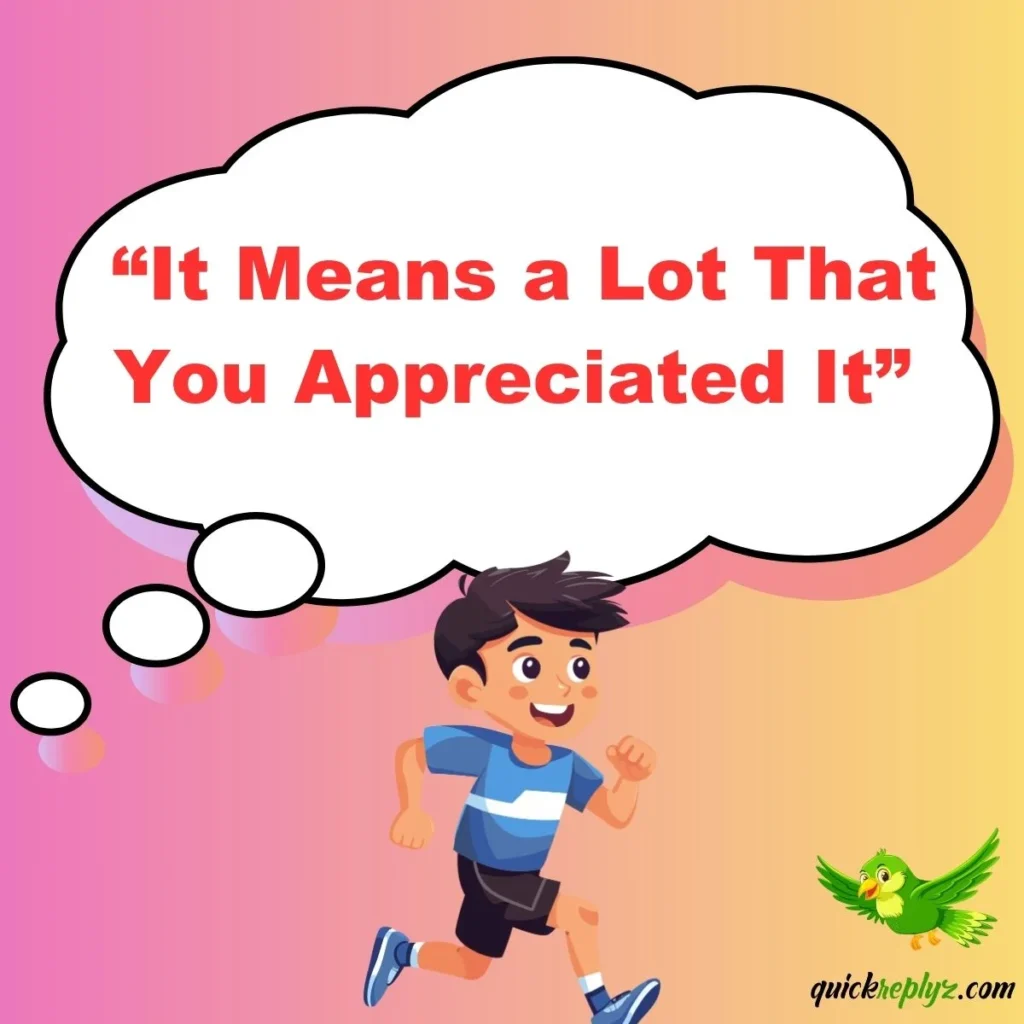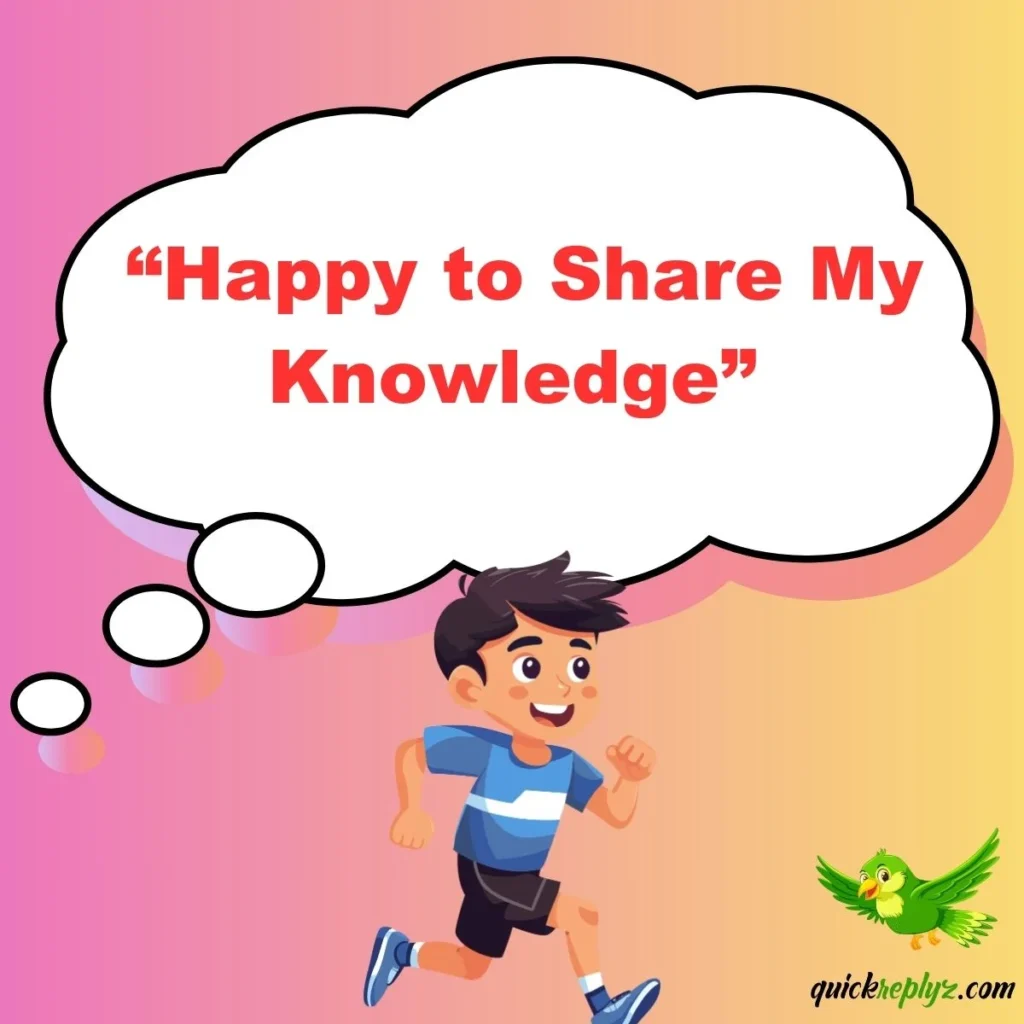Expressing gratitude is an essential part of student life, and knowing how to respond to a “thank you note” can strengthen relationships, build trust, and showcase your personality. In this article, we provide 30 best responses to a “thank you note” for students that are practical, friendly, and suitable for different situations. Each response includes a story, example, and best use, making it easier to use in real-life scenarios.
Whether you are responding to a classmate, teacher, or mentor, these replies will help you communicate appreciation gracefully while maintaining a friendly tone.
Another or Professional Way to Say “Thank You Note”
- You’re Welcome! Happy to Help
- It Was No Problem at All
- Glad I Could Assist
- Anytime! I’m Here to Help
- It Means a Lot That You Appreciated It
- No Worries, I Enjoy Helping
- I’m Happy You Found It Useful
- It Was My Pleasure
- Happy to Be of Assistance
- I’m Sure You’ll Do Great Next Time
- No Need to Thank Me
- I Appreciate Your Gratitude
- Always Glad to Help Out
- It Was Nothing, Really
- I’m Thrilled It Helped You
- Just Doing My Part
- Glad It Made a Difference
- Helping is Always Worth It
- It’s Always Good to Support Each Other
- Happy to Share My Knowledge
- I Enjoy Doing This
- It’s Nothing Special, Really
- It’s Part of Being a Good Classmate
- Your Success is My Reward
- I’m Glad I Could Support You
- No Problem, Anytime You Need Help
- I’m Happy You Reached Out
- It’s Great to See Your Progress
- I Hope It Helps You in the Future
- Keep Up the Great Work!
1. “You’re Welcome! Happy to Help”
Sometimes a simple and sincere response works best. Imagine a classmate thanking you for helping with homework. You can reply with “You’re welcome! Happy to help”, which shows friendliness without overcomplicating things.
Example:
Classmate: “Thanks for helping me with the assignment!”
You: “You’re welcome! Happy to help.”
Best Use: Use this in casual student interactions or group projects to keep communication warm and approachable.
2. “It Was No Problem at All”
This response highlights that the favor was given willingly. For instance, helping a peer understand a difficult concept can be acknowledged simply by saying, “It was no problem at all.”
Example:
Student: “Thanks for explaining the math problem!”
You: “It was no problem at all.”
Best Use: Great for peer-to-peer academic support where you want to emphasize ease and approachability.
3. “Glad I Could Assist”
This reply conveys professionalism while remaining friendly. Imagine tutoring someone in a study group; “Glad I could assist” expresses that you were happy to provide support.
Example:
Peer: “Thank you for helping me with the lab experiment!”
You: “Glad I could assist.”
Best Use: Suitable for academic or professional student settings where you want a polite, confident tone.
4. “Anytime! I’m Here to Help”
This response communicates availability and supportiveness. For example, after helping a classmate revise a presentation, “Anytime! I’m here to help” encourages ongoing collaboration.
Example:
Student: “Thanks for reviewing my slides!”
You: “Anytime! I’m here to help.”
Best Use: Ideal for long-term academic friendships or collaborative projects.
5. “It Means a Lot That You Appreciated It”

This response adds a personal touch and shows that gratitude matters to you. If someone thanks you for giving advice, you can say, “It means a lot that you appreciated it.”
Example:
Classmate: “Thanks for guiding me through the essay!”
You: “It means a lot that you appreciated it.”
Best Use: Works well when you want to strengthen personal or mentor-mentee connections.
6. “No Worries, I Enjoy Helping”
This casual reply is perfect for friends or peers in a student setting. It conveys a relaxed and friendly attitude.
Example:
Friend: “Thanks for lending me your notes!”
You: “No worries, I enjoy helping.”
Best Use: Best for informal student settings, group studies, or social learning environments.
7. “I’m Happy You Found It Useful”
When your assistance genuinely made a difference, this reply emphasizes impact. For instance, after helping someone understand a challenging concept, “I’m happy you found it useful” validates their effort and your support.
Example:
Student: “Thanks for explaining the formula!”
You: “I’m happy you found it useful.”
Best Use: Great for tutoring sessions or academic mentorships.
8. “It Was My Pleasure”
This classic, courteous response works in formal and informal settings. It shows that you are gracious and polite.
Example:
Peer: “Thank you for helping me with my project!”
You: “It was my pleasure.”
Best Use: Ideal when communicating with teachers, mentors, or peers formally.
9. “Happy to Be of Assistance”
This phrase emphasizes your willingness to help while keeping a professional tone.
Example:
Student: “Thanks for helping with the coding assignment!”
You: “Happy to be of assistance.”
Best Use: Suitable for academic groups or professional student clubs.
10. “I’m Sure You’ll Do Great Next Time”
This response is encouraging and motivational, perfect when someone thanks you for guidance or feedback.
Example:
Classmate: “Thanks for reviewing my presentation!”
You: “I’m sure you’ll do great next time.”
Best Use: Best for peer support and building confidence among students.
11. “No Need to Thank Me”
A humble and modest response, showing that helping others comes naturally to you.
Example:
Student: “Thanks for sharing your notes!”
You: “No need to thank me.”
Best Use: Works in both casual and semi-formal student settings.
12. “I Appreciate Your Gratitude”
Acknowledging their thankfulness adds warmth to your reply.
Example:
Peer: “Thanks for helping me with research!”
You: “I appreciate your gratitude.”
Best Use: Use when you want to encourage positive communication among classmates.
13. “Always Glad to Help Out”
This reply shows enthusiasm and willingness to contribute.
Example:
Student: “Thanks for explaining the lab procedure!”
You: “Always glad to help out.”
Best Use: Perfect for study groups and collaborative assignments.
14. “It Was Nothing, Really”
A modest response that conveys humility while maintaining friendliness.
Example:
Friend: “Thanks for helping me with homework!”
You: “It was nothing, really.”
Best Use: Casual, peer-to-peer responses in student environments.
15. “I’m Thrilled It Helped You”
Shows excitement about making a positive impact.
Example:
Classmate: “Thanks for helping me revise!”
You: “I’m thrilled it helped you.”
Best Use: Ideal for tutoring, mentorship, or collaborative projects.
16. “Just Doing My Part”
Expresses responsibility and community spirit.
Example:
Student: “Thanks for helping me clean the lab!”
You: “Just doing my part.”
Best Use: Perfect for group tasks, club activities, or team projects.
17. “Glad It Made a Difference”
Acknowledges the effect of your help on their success.
Example:
Peer: “Thanks for your guidance!”
You: “Glad it made a difference.”
Best Use: Best in academic mentoring or peer counseling scenarios.
18. “Helping is Always Worth It”
Shows commitment to supporting others.
Example:
Student: “Thanks for sharing study tips!”
You: “Helping is always worth it.”
Best Use: Encouraging phrase for group studies or academic clubs.
19. “It’s Always Good to Support Each Other”
Promotes teamwork and mutual assistance.
Example:
Classmate: “Thanks for your help!”
You: “It’s always good to support each other.”
Best Use: Ideal for collaborative learning environments.
20. “Happy to Share My Knowledge”

Highlights your willingness to educate and guide peers.
Example:
Student: “Thanks for explaining the topic!”
You: “Happy to share my knowledge.”
Best Use: Academic mentoring or peer tutoring sessions.
21. “I Enjoy Doing This”
Casual yet genuine, showing personal satisfaction in helping others.
Example:
Friend: “Thanks for helping me with the project!”
You: “I enjoy doing this.”
Best Use: Peer-to-peer friendly responses.
22. “It’s Nothing Special, Really”
Shows modesty and downplays the favor while keeping sincerity.
Example:
Student: “Thanks for helping me with my notes!”
You: “It’s nothing special, really.”
Best Use: Informal settings among classmates or friends.
Also Read This : 30 Best Easter Text Messages
23. “It’s Part of Being a Good Classmate”
Encourages positivity and community spirit.
Example:
Peer: “Thanks for helping me with the assignment!”
You: “It’s part of being a good classmate.”
Best Use: Classroom, study groups, or student organizations.
24. “Your Success is My Reward”
Shows that you value their achievement over recognition.
Example:
Student: “Thanks for helping me with the project!”
You: “Your success is my reward.”
Best Use: Tutoring sessions or mentorship programs.
25. “I’m Glad I Could Support You”
Friendly and warm, highlighting your willingness to assist.
Example:
Classmate: “Thanks for explaining the topic!”
You: “I’m glad I could support you.”
Best Use: Peer support and study group communication.
26. “No Problem, Anytime You Need Help”
Shows readiness to assist again in the future.
Example:
Student: “Thanks for reviewing my work!”
You: “No problem, anytime you need help.”
Best Use: Builds trust and encourages ongoing collaboration.
27. “I’m Happy You Reached Out”
Encourages initiative and openness among students.
Example:
Classmate: “Thanks for guiding me!”
You: “I’m happy you reached out.”
Best Use: Peer guidance, tutoring, or mentoring.
28. “It’s Great to See Your Progress”
Shows that you notice their growth and improvement.
Example:
Student: “Thanks for helping me with practice exercises!”
You: “It’s great to see your progress.”
Best Use: Academic mentorship and study encouragement.
29. “I Hope It Helps You in the Future”
Forward-looking, shows care for their continued success.
Example:
Peer: “Thanks for helping me prepare for exams!”
You: “I hope it helps you in the future.”
Best Use: Best for exam preparation or skill-building guidance.
30. “Keep Up the Great Work!”
Encouraging and motivational, perfect for boosting confidence.
Example:
Student: “Thanks for tutoring me!”
You: “Keep up the great work!”
Best Use: Motivational reply for classmates or mentees.
Conclusion
Responding to a “thank you note” thoughtfully strengthens student relationships, fosters collaboration, and builds mutual respect. From casual replies like “No worries, I enjoy helping” to motivational responses such as “Keep up the great work!”, there’s a perfect response for every situation. Using these 30 responses will help students communicate effectively, professionally, and warmly, creating a positive learning environment.
FAQs
Q1: Can these responses be used with teachers or mentors?
Yes, many responses like “It was my pleasure” or “Happy to be of assistance” are formal enough for mentors.
Q2: Are these replies suitable for group chats?
Absolutely. Short, friendly replies like “Anytime! I’m here to help” work well in group settings.
Q3: Do these responses work in professional student organizations?
Yes, responses such as “Glad I could assist” or “It’s part of being a good classmate” maintain professionalism while being warm.
Q4: Can I customize these replies?
Definitely! Each response can be tailored with the student’s name or specific situation for a more personal touch.

